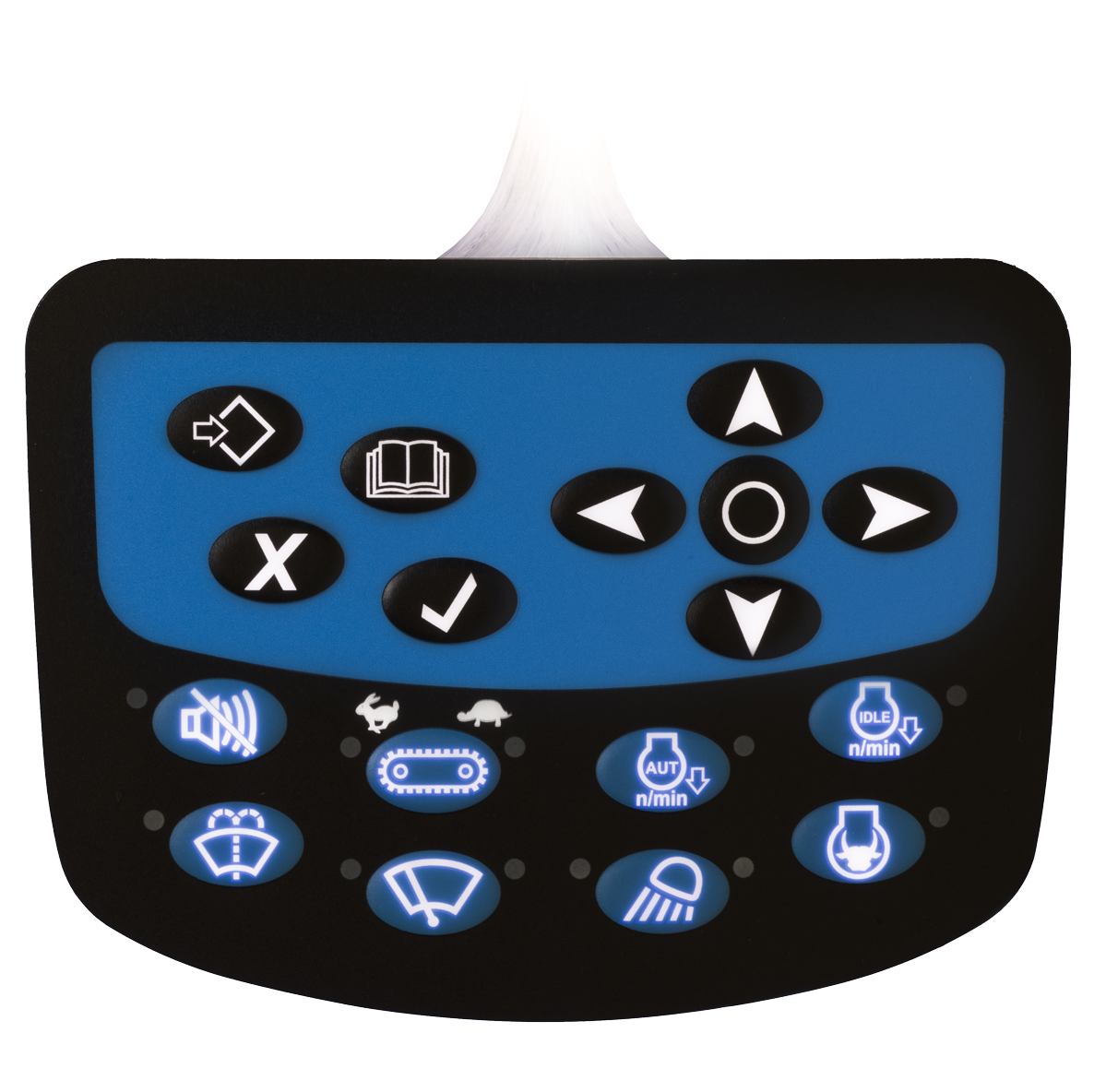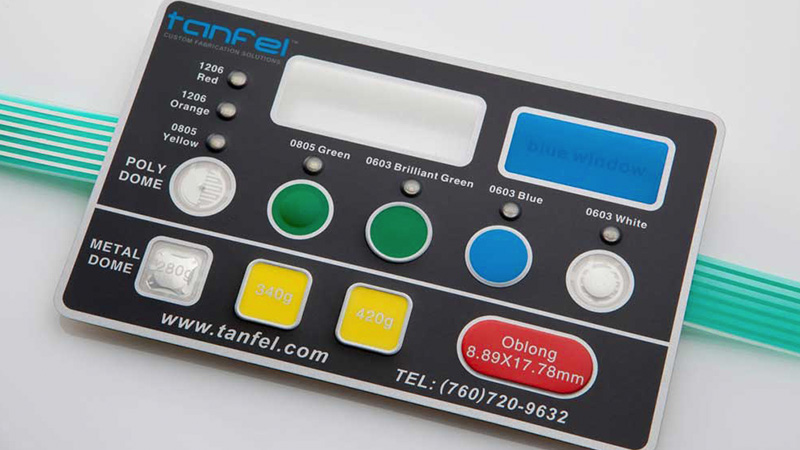How Membrane Switches Improve User Experience in Tech Gadgets
How Membrane Switches Improve User Experience in Tech Gadgets
Blog Article
Membrane Switch Over Modern Technology: The Secret to Reputable and Affordable User Interfaces
Membrane switch innovation has actually arised as a crucial element in the design of customer interfaces, giving both integrity and cost-effectiveness throughout a varied variety of applications. As we discover the multifaceted benefits of membrane buttons, their possibility for development raises concerns regarding future applications and evolving trends.
Understanding Membrane Switch Modern Technology
Membrane button modern technology is a commonly utilized interface service in different digital gadgets, providing a seamless blend of capability and style. This modern technology integrates numerous layers of products, typically containing a graphic overlay, spacer layer, and a circuit layer. The graphic overlay presents the interface aspects, while the spacer layer divides the circuit layer from the overlay until an individual turns on a switch.
When stress is used to the overlay, the circuit layer completes the electrical circuit, sending a signal to the tool. This device enables various configurations, consisting of tactile responses and backlighting choices, boosting customer interaction. Membrane layer switches are typically produced making use of long lasting products such as polyester or polycarbonate, making certain long life and resistance to ecological aspects like wetness and dust.
The flexibility of membrane switches allows their application in varied markets, including clinical gadgets, customer electronic devices, and commercial controls. Their compact layout permits assimilation into space-constrained atmospheres, providing an efficient user interface without endangering visual charm. Recognizing the complexities of membrane layer button innovation is essential for producers and designers looking for to produce reputable and effective human-machine user interfaces.
Secret Benefits of Membrane Layer Buttons
While different user interface solutions exist, membrane changes deal distinct advantages that make them a preferred choice in various applications. Among the primary benefits is their resilience; membrane switches are developed to withstand extreme ecological problems, including moisture, dirt, and temperature changes, making certain durable performance. This durability significantly minimizes the demand for frequent substitutes, consequently lowering overall upkeep expenses.

Additionally, membrane buttons are light-weight and compact, making them appropriate for applications where room is limited. Their inconspicuous style adds to a smooth appearance without compromising performance.
Cost-effectiveness is likewise a significant advantage, as the manufacturing procedure for membrane layer changes tends to be less pricey compared to standard mechanical buttons. This price, combined with their integrity and ease of installment, placements membrane changes as a practical option for a large range of markets looking for efficient and reliable interface.
Applications Throughout Different Industries
How do membrane switches adapt to the diverse requirements of different markets? Membrane button innovation is increasingly acknowledged for its versatility, making it ideal for a vast array of applications across numerous markets. In the medical area, membrane layer buttons are used in diagnostic tools and individual tracking gadgets, where their longevity and simplicity of cleansing are vital for maintaining hygiene standards. The auto sector utilizes these buttons in control panels and control board, offering a look what i found streamlined aesthetic while ensuring easy to use procedure.
In customer electronic devices, membrane layer switches supply a portable solution for remotes and home devices, boosting customer experience with user-friendly layout. Additionally, the commercial sector leverages membrane switches for machinery control board, gaining from their resistance to rough environments, such as wetness and dust.
Military and aerospace applications also use membrane switches for their dependability and capability to stand up to severe problems, making certain functional efficiency in check here vital circumstances. In addition, the food and drink sector embraces these buttons for automated systems, where cleanliness and simplicity of operation are vital. Inevitably, membrane layer switches are tailored to fulfill the one-of-a-kind needs of each market, showing their vital role in modern innovation user interfaces
Style and Modification Choices

In the realm of membrane layer button technology, layout and personalization choices play a critical function in improving functionality and customer interaction. These buttons can be customized to meet details operational requirements and visual preferences, making them functional elements in numerous applications.
One of the key personalization options is the format of the switch itself, which can be made to fit unique customer interfaces and ergonomic considerations. By readjusting the shape, dimension, and arrangement of switches, manufacturers can develop intuitive layouts that help with simplicity of usage. Furthermore, the incorporation of various colors and visuals overlays enables branding and enhanced presence, making sure that customers can rapidly recognize functions.
In addition, membrane switches can be crafted with various tactile responses mechanisms, such as increased switches or audible clicks, to improve the customer experience. Different materials can additionally be selected for toughness and ecological resistance, dealing with variables such as wetness, temperature level changes, and chemical direct exposure.
Ultimately, the substantial layout and customization choices readily available in membrane layer switch innovation equip services to develop tailored services that not only meet functional demands however click here for info additionally align with their branding and operational requirements.

Future Patterns in Membrane Switches
As membrane layer button technology remains to develop, future patterns are significantly concentrated on enhancing user experience and integrating sophisticated capabilities. One substantial trend is the integration of touch-sensitive and capacitive technologies into typical membrane layer buttons. This development allows for more intuitive user interfaces, offering tactile comments while preserving a smooth style.
One more emerging pattern is making use of eco-friendly materials, driven by the growing demand for lasting manufacturing methods. Suppliers are looking for to lower their carbon impact by making use of recyclable substratums and low-impact inks, straightening with international sustainability goals.
Moreover, the rise of the Net of Points (IoT) is motivating the consolidation of wise functions into membrane buttons. Boosted connection choices will enable tools to connect with each various other, enabling seamless assimilation right into wider systems.
Additionally, advancements in printing technologies, such as electronic printing, are enabling higher layout versatility and personalization. This makes it possible for suppliers to create elaborate designs and vivid shades cost-effectively.

Verdict
In conclusion, membrane button innovation stands for an essential innovation in individual interface design, using substantial advantages in sturdiness, customization, and cost-effectiveness. As improvements proceed to emerge, specifically in touch-sensitive interfaces and sustainable products, the potential for membrane switches over to enhance user experience and performance remains promising.
Report this page